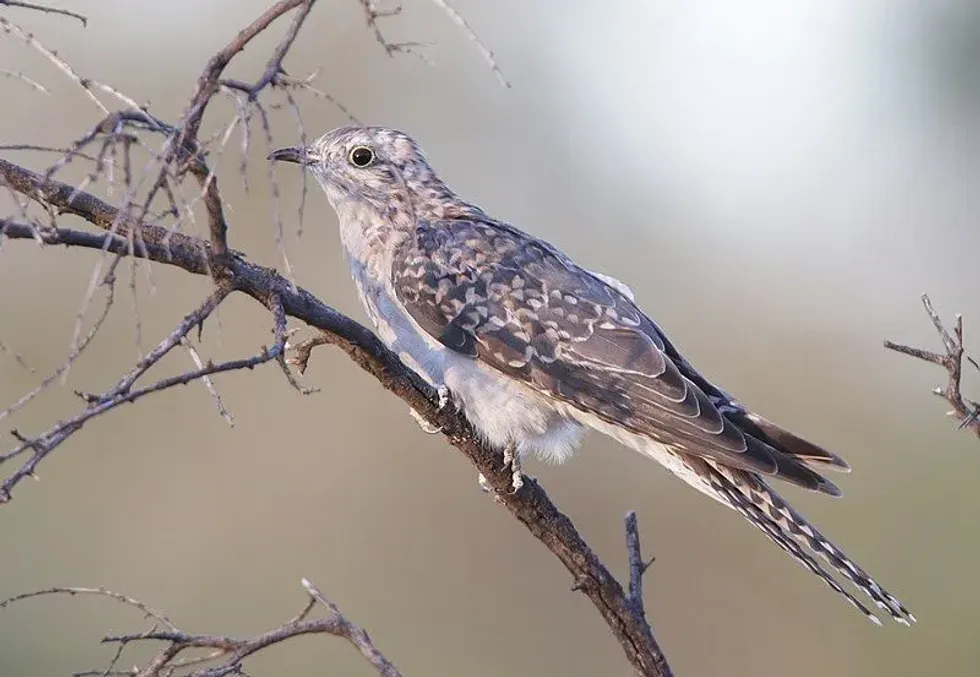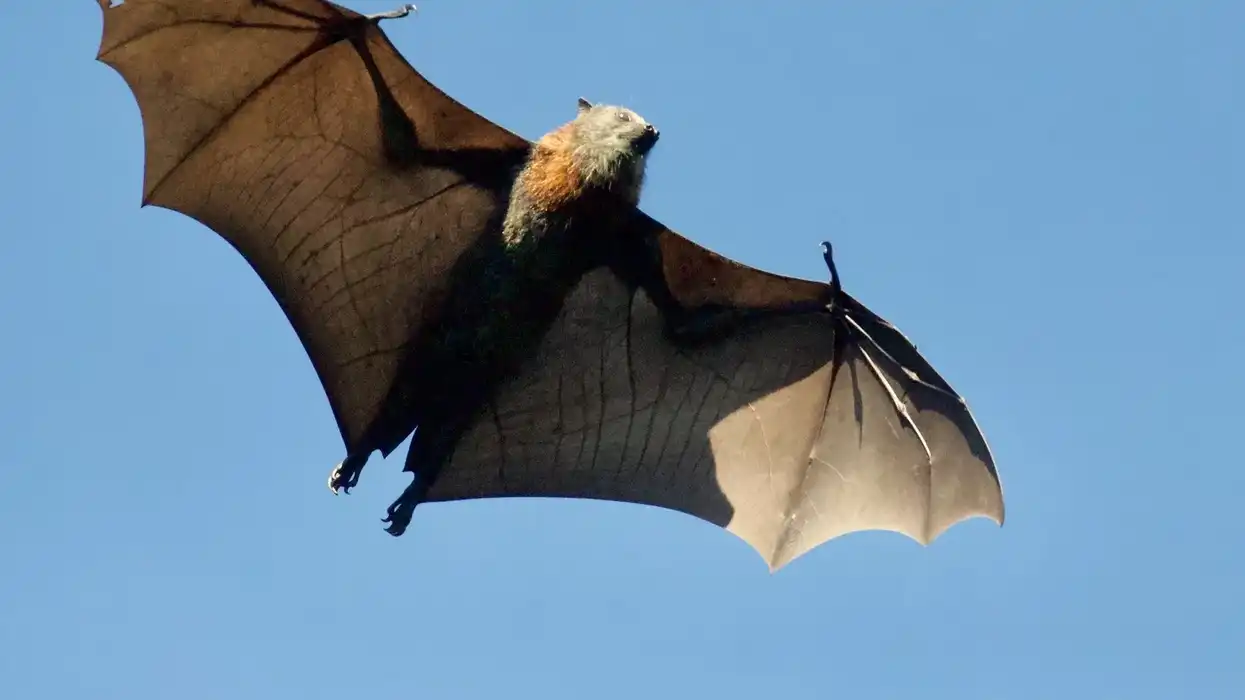The brush cuckoo (Cacomantis variolosus) is a bird species that has a largely gray-brown head and tail plumage, and dark brown or dark gray wings, along with buff underparts. Both male and female brush cuckoos look nearly the same, but the female may have a smaller region of buff underparts.
Buff, as you may already know, is a light brown to yellow ochre-ish color, which fits the description of the underparts of the brush cuckoo species.
The brush cuckoo habitat range stretches across northern and eastern Australia, Papua New Guinea, the Solomon Islands, Indonesia, and Thailand. They can be found in a wide variety of habitats including rainforests, rainforest edges, mangroves, and secondary forests.
A Brush cuckoo's diet consists of a variety of caterpillars, beetles, ticks, and mites, as well as fruits, shoots, roots, and nuts.
The breeding season for brush cuckoos is around the spring and the summer. The male and female pair find a site high on a branch for copulation.
The brush cuckoo (Cacomantis variolosus) is a brood parasite, like many other species of cuckoos. What this means is that adult female brush cuckoos will often lay eggs in the nests of other species of birds and rely on them to raise their juvenile cuckoos.
Brush cuckoos have the ability to lay eggs specifically for a certain host that has markings almost identical to their eggs.
They don't even build a nest of their own! Once the young cuckoos hatch, they either evict or take the upper hand from the juvenile host eating all their food and killing them.
Cuckoos are barred from ever meeting their parents.
The brush cuckoo call is considered one of the most melodious of all birds of the world, and several birdwatchers often travel long distances across northern Australia to hear the famous brush cuckoo song. The population of the brush cuckoo bird is stable, and its habitat range is not under any threat as of now.
If you enjoy this article on the brush cuckoo, make sure to check out our facts pages on the Eurasian collared dove and the Inca dove.
Brush Cuckoo Interesting Facts
What type of animal is a brush cuckoo?
The brush cuckoo is a species of bird.
What class of animal does a brush cuckoo belong to?
The brush cuckoo is a species classified as Aves, a biological class containing a large variety of birds of the world. In this large class, they belong to the family Cuculidae which is the only family of the group Cuculiformes, that has most of the cuckoo bird species of the world.
How many brush cuckoos are there in the world?
While the exact number of brush cuckoos in the world is not known, the species is considered to enjoy an abundant distribution across their habitat range.
Where does a brush cuckoo live?
Brush cuckoo birds can be found in an abundant distribution across north and eastern Australia, the Solomon Islands, Philippines, Thailand, Malaysia, and Indonesia. They also migrate to the southern parts of Australia.
What is a brush cuckoo's habitat?
The brush cuckoo has adapted to a wide range of habitats including rainforests, rainforests edges, secondary forests, and mangroves. Secondary forest are those that grow after a major deforestation event affects them.
Due to their ability to adapt to several different types of habitat, they are often called a generalist Oceania species. They are always on the branches of trees since they do not build nests of their own.
Who does brush cuckoo live with?
Though brush cuckoos usually feed and roost alone, they live in the proximity of a variety of host species. Parents expecting to lay eggs soon have been observed watching the clutches of potential hosts to find an opportunity to sneak their young into their nest.
How long does a brush cuckoo live?
Though the lifespan of this particular species has not been studied, similar species of the order Cuculiformes and family Cuculidae have been known to live for around six to 10 years.
How do they reproduce?
Like any other species of bird, the brush cuckoo reproduces sexually. The male and female may engage in courtship mid-air and then look for a copulation site at the upper end of a tree since they do not build their own nests.
The breeding season comes around twice a year, during spring and summer. Just like other species of cuckoo birds like the yellow-billed cuckoo and the black cuckoo, they are brood parasites.
By the time they breed, the parents have already selected a host for their young.
The female lays eggs in the host bird's nest, and baby brush cuckoos are then raised by an entirely different species. Males can also help find hosts after breeding.
Even a few weeks after fledging, they continue to depend on their host bird for food and this is why juvenile brush cuckoos are rare to see. Brush cuckoos are not family birds.
What is their conservation status?
The brush cuckoo is one of the more abundant birds of the world and are listed as a species of Least Concern in the International Union for Conservation of Nature (IUCN) Red List of Threatened Species.
Brush Cuckoo Fun Facts
What does a brush cuckoo look like?
The brush cuckoo has a dark gray-brown pair of wings, with a slightly lighter head and tail plumage. Like other species of bird in the same family, they can rotate their head over 270 degrees to look around.
Their brown bill houses strong vocal cords that produce an extremely melodious call. The longish tail is important for navigation and balance. The underparts of this species are colored buff.
How cute are they?
Cuckoos are some of the cutest birds out there and also have beautiful calls along with their good looks. Though brush cuckoos do not have colors that might fit the description of dazzling, they do have a subtle charm to them.
How do they communicate?
Cuckoos sing a beautiful song every day in the morning. They also have a few different calls that they use to signal danger to other birds in their vicinity. A brush cuckoo note sounds like 'ka-ka-ka-ka-ka-kow-kow-kowlp-kowlp-kowlp-kowlp' and is very distinctive.
How big is a brush cuckoo?
These birds grow to around 8.7-10.2 in (22–26 cm) in length, meaning they are slightly larger than the diamond dove and almost exactly the same size as a ringneck dove.
How fast can a brush cuckoo fly?
While the exact flight speed of this species has not yet been studied, similar birds have been known to be able to hit speeds of around 25 mph (40 kph).
How much does a brush cuckoo weigh?
An adult bird of this species weighs around 6 oz (175 g).
What are the male and female names of the species?
Both males and females of this species can be referred to by the same name.
What would you call a baby brush cuckoo?
A baby bird is often called a hatchling, so the young are called brush hatchlings.
What do they eat?
Their diet includes a variety of insects, including caterpillars, centipedes, millipedes, beetles, ticks, mites, and ants. They are also known to eat fruits, roots, shoots, nuts, and berries.
Are they dangerous?
No, not at all! They would much rather fly away than attack a human. However, as can be expected, a wild individual that feels threatened with no means of escape may bite you, though they cannot really cause any long-term harm.
Would they make a good pet?
Yes, absolutely! They do not require much care and can be fed easily. They are extremely cute and can be tamed and are sometimes kept as companions in Australia.
Did you know...
Cuckoos got their name due to onomatopoeia as the word is meant to mimic their beautiful call.
A group of cuckoos is called an asylum or a cooch of cuckoos.
What is special about cuckoo?
The most distinctive trait of cuckoos has to be their brood parasitic nature. Apart from this, they are also famous for their soothing calls.
Are cuckoos native to Australia?
Though this species is found commonly in Australia, it is not endemic to the island and can be found across many other isles to its north.
Here at Kidadl, we have carefully created lots of interesting family-friendly animal facts for everyone to discover! Learn more about some other birds from our azure-winged magpie facts and red-footed booby facts pages.
You can even occupy yourself at home by coloring in one of our free printable Brush cuckoo coloring pages.









